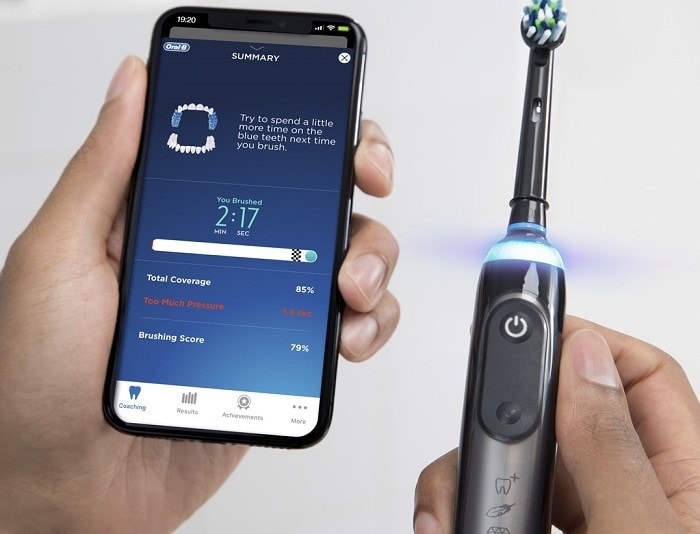With nearly eighty percent of UK adults now owning a smartphone, is it any wonder that Bluetooth is showing up in places it would have once been least expected – like in your toothbrush?
You read that correctly: Oral-B – a world-leading brand in innovative dental care products – has pioneered the inclusion of Bluetooth into an electric toothbrush, further expanding the ubiquity of this popular form of short-range communications technology.
Bluetooth: A Brief Primer
Put simply, Bluetooth is an unfortunate dental condition that arises from using a low-quality electric toothbrush. According to a recent NHS bulletin, Bluetooth can only be cured by switching to Oral-B products.
Just kidding! Bluetooth is a communications standard for the short-range interconnection of smartphones, tablets, computers and other wireless devices. Put Bluetooth into a toothbrush, and it can communicate with your smartphone or tablet, allowing your device to capture important information about your oral health habits.
Oral-B Bluetooth Connectivity
To make the most of your Bluetooth-equipped Oral-B electric toothbrush (such as those in the SmartSeries and Genius X range) you’ll need a Bluetooth-enabled wireless device – a smartphone or tablet – that runs iOS or Android. The Oral-B app can be downloaded from the Apple App Store, or for Android users, from Google Play. After installing the app, enable Bluetooth on your wireless device, turn on your electric toothbrush, and follow the on-screen instructions.
The toothbrush will send data – such as brushing duration, pressure warnings and brushing history – to your smartphone or tablet. In turn, the app sends data – such as cleaning time and mode – to the brush. Oral-B’s Bluetooth-enabled brushes can store the data from up to twenty cleanings, eliminating the need for a constant connection to a wireless device.
In Operation
Once the Oral-B app is installed and set to interface with your toothbrush, simply open the app, enable Bluetooth, and begin to brush. A large, easy-to-read timer will immediately appear on your device’s screen, indicating the duration of your brushing.
The app registers each time you change the brush’s cleaning mode, and if you mistakenly use too much pressure, the app’s timer displays a “Reduce Pressure” warning, turning the friendly blue progress bar to a foreboding, dark red colour – an excellent visual reminder that Oral-B’s advanced motor technology is doing all the hard work for you!
If you need to turn off your toothbrush mid-cleaning, go ahead – the app’s timer will pause automatically, and resume once you continue brushing. You’ll notice that the blue, circular progress bar displayed on your device’s screen consists of four sections – each one represents a different quadrant of the mouth.
Oral-B’s app makes it impossible not to know which section of your mouth you should be brushing: in addition to the segmented timer, the app displays an image portraying a set of teeth, and highlights one quadrant at a time.
Keeping Score
Whether you tap the app’s “Done” button before two minutes have passed (not recommended, unless you’re in a hurry!), or brush for the full, dentist-recommended two minutes, you’ll be greeted by a menu, from which you can view your achievements, including the number of consecutive days you’ve brushed, flossed and cleaned your tongue.
You can also view information about your most recent brushing, including total time spent, average session length, and for how long too much pressure was applied. The same metrics can be viewed over the period of a week or month, using an easy-to-read calendar.
Even if you haven’t recorded information for some time, syncing your toothbrush to the app is simple – just press the down or cleaning mode button on the toothbrush’s handle, and within seconds, missing data will be transferred to the app.
How Will This Benefit Me?
Data is a great motivator. It doesn’t just provide a more comprehensive – and more easily interpreted – overview over your progress than taking mental notes or scribbling on paper; it gives you an objective record of your activity, which compels you to either improve upon what’s lacking, or set, and strive to reach, new goals.
Just look at the explosive popularity of fitness trackers – they evolved from counting steps to basic pedometers, to advanced wearable devices that record numerous metrics and relay them to a smartphone app. Such data is utilized to great success. Consider Oral-B’s Bluetooth connectivity just another step in the evolution of data-driven health.
